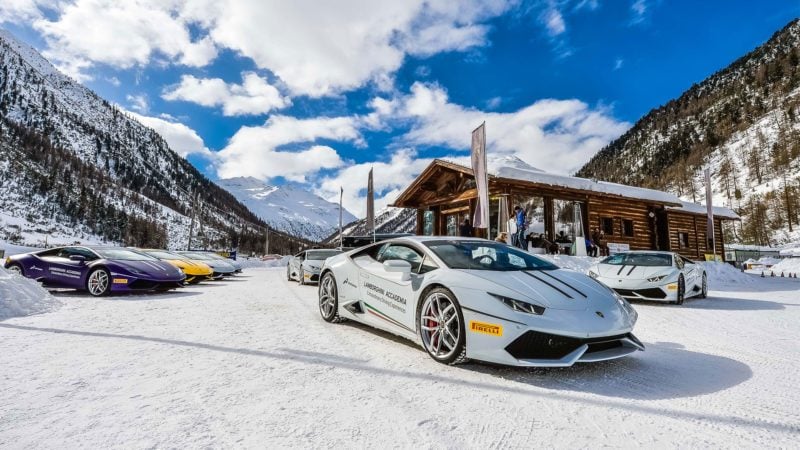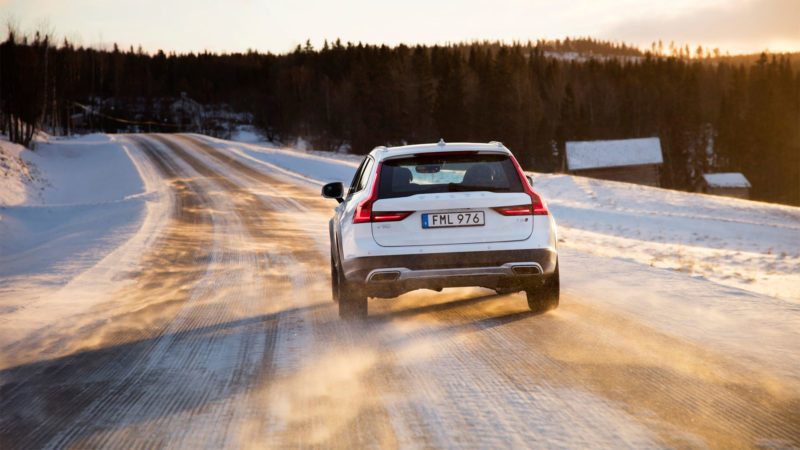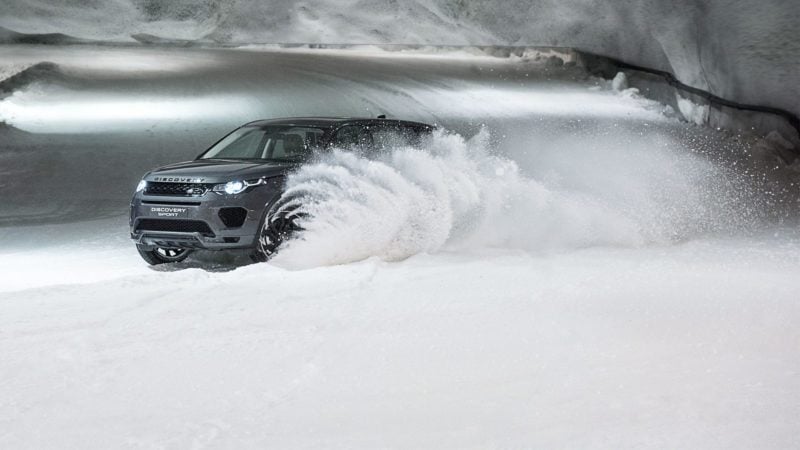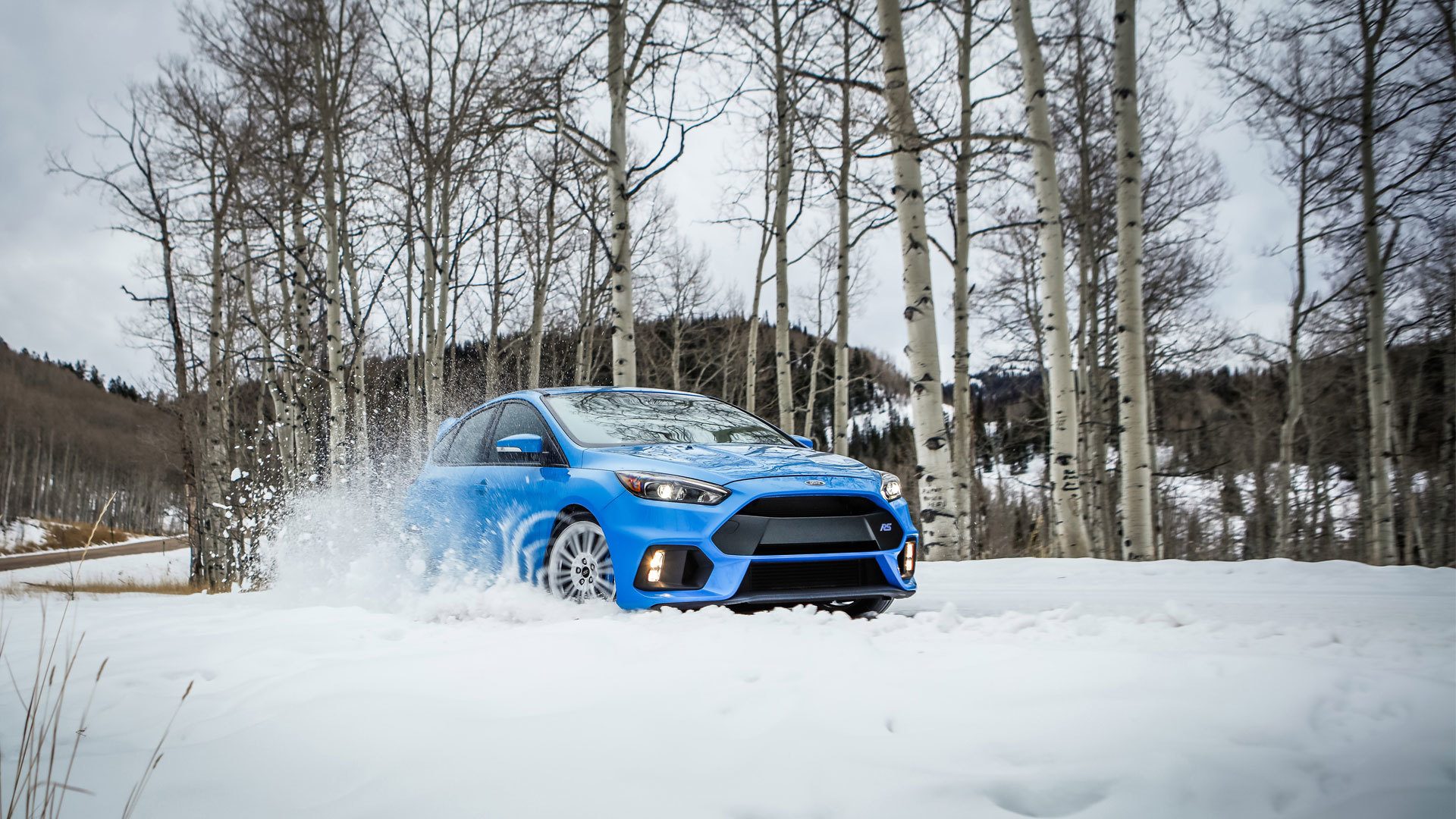Winter is in full swing in the northern hemisphere. This is something residents in the path of winter storm Harper are acutely aware of right now. Spanning from the Midwest through the Northeast, it’s dumping snow, sleet, and rain across half the country.
Due to this, we want to keep you safe as the weather turns sour. As a result, why we’ve compiled a list of tips and tricks to help get you through Harper, along with the next few months of wintery weather.

The Right Rubber For the Job
There’s no sense attempting to drive a car in the snow that’s not suited for the conditions.
While it’s a myth that rear-drive vehicles spell instant disaster on snowy roads, they are harder to control for the average driver. This is even truer when the rear of the vehicle is light — such as in a pick-up truck.
But more important than the drivetrain setup is the tires. Running summer-only tires and AWD will leave you spinning all four wheels instead of just two.
A great example of this is watching nearly any driver in an SUV who thinks they are invincible. It won’t take long to spot these folks on the road. They typically drive a high performance or luxury SUV and will floor it as soon as the light turns green. You’ll hear the familiar sound of spinning rubber while they claw for traction.
With that said a rear-drive car will almost always be better on winter tires than an AWD or 4WD car on summer tires.
If you live in an area where temps drop below 45 degrees (7 degrees Celsius) regularly or where you get snow, invest in a set of steel wheels and winter tires. These often show up on Craigslist, and you can typically score a used set for a couple hundred bucks. Even mediocre winter tires are better than summer tires in most situations.
The same goes for all-season tires too. While all-seasons will do better in the snow and won’t turn to hockey pucks when it gets cold, they still won’t give you the traction of snow tires. However, as long as you aren’t driving around on Chinese-made no-name tires, chances are you’ll survive.
If you’re caught in the snow while still running summer tires, not all hope is lost. Try reducing the pressure in the tires. This will give you a larger contact patch on hard packed snow and it might make moving forward a bit easier. Be careful though; letting too much air out of your tires will cause the bead to separate.
Driving won’t be easy on summer tires in the snow, so take extreme caution when trying to limp you vehicle home — or better yet, to a tire retailer.
The Rest of the Car
You don’t want to ever venture out in inclement weather with a poorly maintained car. Breakdowns are often unpleasant when it’s cold, and if you lose the source of heat, they can also become dangerous. Given the weather, you can expect tow trucks to take longer than expected as well.
Having a quality battery is incredibly important. When it’s cold your battery delivers fewer volts to your starter. This is why you often hear cars struggle to fire up in sub-zero temperatures. The best thing you can do is make sure your battery has an appropriate number of cold cranking amps. At the very least, it should have the same as OEM; however, in the extreme cold, a high number is often better.
You’ll want to make sure all the basics are taken care of too. Good windshield wipers are essential. We recommend switching to either winter blades or something like Bosch Icon blades during the winter months. You’ll also want to top off that washer fluid reservoir — preferably with a de-icing agent.
Finally, working headlights are pretty important. If you’ve replaced your OEM lights with either aftermarket HIDs or “Xenon charged” halogen lights you might want to consider something further down the color spectrum. Blue light reflects off snow more and causes glare. Typically the yellower the light, the better it’ll do in poor weather – plus if you go with yellow lights you’ll get that mad JDM look!

Drive Only If Needed
Perhaps the safest possible thing you can do when the road conditions deteriorate is to just stay home. While this isn’t always possible, it’s something to consider — especially if your job allows you to work from home.
Even if you’re the world’s best driver, chances are other people on the road aren’t. This is why, if you can, take yourself out of harm’s way.
Also, staying off the roads allows for road crews to clear away snow quicker too. This means you’ll be able to venture out sooner and stave off cabin fever.
Staying home will also give you an excuse to sit around playing video games all day as well. So if you can, kick back with your favorite winter beverage and fire up a racing game.

If You Must Leave the House
We know realistically, staying home isn’t always an option. So if you need to venture out into the winter wonderland, here are a few tips to stay safe even before you hit the road.
Before you set off, you’ll want to make sure your vehicle is properly warmed up. Typically an engine temperature around 120 degrees is adequate. This ensures your oil is viscous and that there’s less stress overall on moving parts. It’ll also mean the heat kicks on right away too, so you aren’t completely miserable.
Also be sure to clear all the snow from your car — not just from the windows. This means the hood, roof, trunk… everything. Having snow blow off your car while driving down the road is dangerous for other drivers.
It’s also incredibly annoying. When snow blows off another car, it leaves the cars behind them in a near white-out condition. If you can’t take the extra few minutes to brush away the snow from your vehicle, please just do everyone a favor and stay home – or better yet move to a state where it doesn’t snow.
Clearing snow from your vehicle also means that’ll you need to have completely clear windows. Do not just clear a patch on the front windshield and call it good. It’s not. Remove snow and ice from every window on your vehicle. This will ensure you have the best visibility on the road.
A word of warning though. Under no circumstances should you throw hot water on your windshield to defrost it. If you’ve ever had even a basic lesson in thermodynamics, you know glass expands when it’s flash heated. So if you throw boiling water onto your front windshield you’re going to have a bad time. The window will shatter and you’ll need to drive to your destination with snow blowing in your face.

Once You’re on the Road
After your vehicle is cleaned off and properly warmed up, you’ll now be able to set off into the frozen tundra.
First, assume everyone else on the road has no idea what they’re doing — let’s face it, they probably don’t. Leave them plenty of space and be ready to make an evasive maneuver if needed. It goes without saying you should be paying extra attention. So put away the phone, turn down the radio, and stay focused.
Second, remember stopping distances increase on snowy roads. Brake earlier and use engine braking if possible — as an added bonus, you’ll get some sweet exhaust music. This will reduce the chance of a slide and keep you safer overall. Don’t hesitate to reduce your speed when visibility gets bad. There’s no point rushing to get in an accident.
Third, take into account that the contrast in snow cover is reduced. Since everything is blanketed in a layer of white, it makes distinguishing certain objects on the road difficult. This is worse at night too.
You can combat this with a pair of yellow glasses. This will allow you to see more contrast. The only downside? You’ll look like Bono. As awful as this is, it might be a small price to pay for some added safety. The unique color spectrum might even make it look like a beautiful day.
Finally, know your vehicle. If it has a tendency to step out during cornering, slow down even more for turns. If it weighs as much as a house, leave yourself more room to stop too — we’re looking at you SUV drivers.

The Dreaded Slide
At some point in your winter wonderland escapades, chances are you’ll end up in a slide no matter how careful you are.
If this happens, remember those famous words from the Encyclopedia Galactica and “Don’t Panic”.
Simply turn into the slide and whatever you do, don’t apply the brakes. Also no need to channel your inner Jeremy Clarkson either. Giving it a boot full of throttle is a sure fire way to swap ends.
If unsuccessful at controlling the slide, you might end up in the ditch or a snowbank. This isn’t the ideal situation by any means, but such is life.
In a 4WD vehicle, getting out is fairly easy. Put the vehicle in 4Lo and first gear, then simply crawl out of your snowy prison. In single-driven-axle vehicle, you can attempt to rock back and forth. This probably won’t work though. At this point, your options are to either dig yourself out or call for a tow — all while wishing you had 4WD.
To Hoon or Not to Hoon, That Is the Question
We admit a coating of freshly fallen snow is extremely inviting. However, if you must turn into the snowy Ken Block, the best place to do so is in a parking lot. Never hoon on a public road, no matter how great the temptation.
Also, if you do hoon around in a parking lot, it’s best to make sure you aren’t trespassing. If it’s private property you should stay away unless you have permission from the owner. The last thing you want is a ticket when you’re just out to have a bit of fun.
Once you have permission and can legally enter an area to slide around in the snow, make sure it’s completely clear. If there are other cars or people you’ll want to skip out on doing anything. Hitting a parked car will just make you look foolish — although we understand they sometimes jump out of nowhere.
If it’s clear, have some fun. However, keep in mind you aren’t Marcus Grönholm and no matter how cool you think you look, chances are you look rather ridiculous. This is especially true if you’re doing handbrake slides in your mom’s Honda CR-V.
This is by no means an exhaustive list of everything to keep you safe this winter, but it’s a good start. For a more extensive list, as well as YouTube videos, check out AAA and its comprehensive list.
Now for your enjoyment, let’s check out how our neighbors to the north handle snowy weather!
See more articles on Tips and Tricks.










